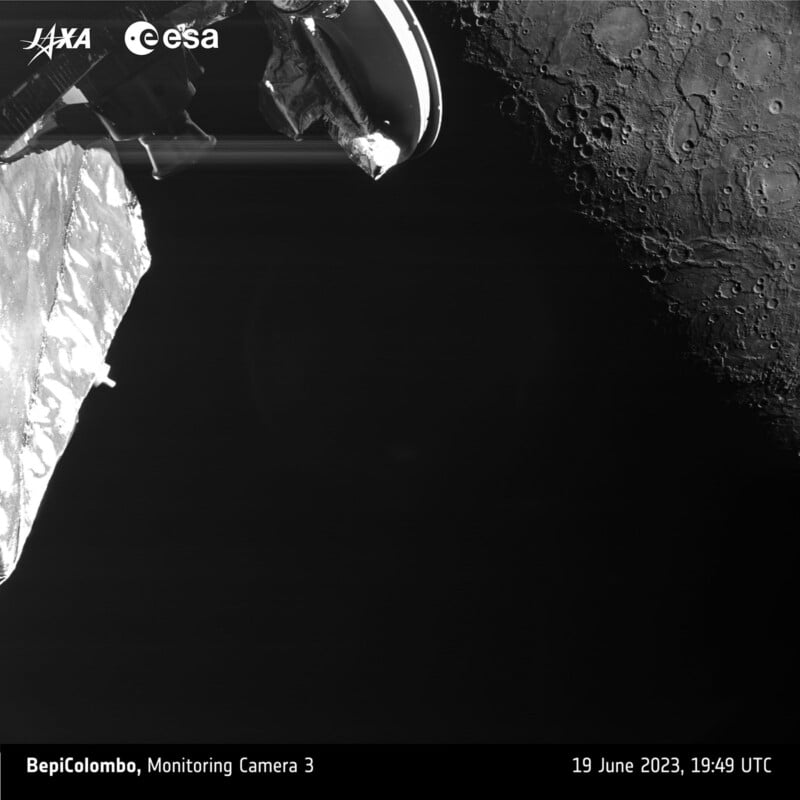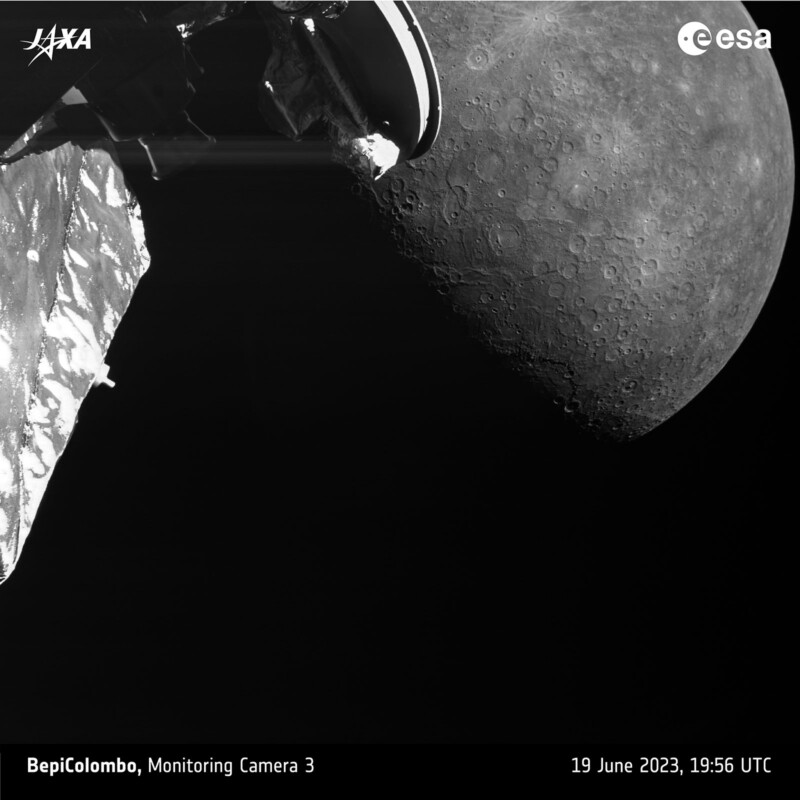Close Flyby of Mercury Reveals New Craters and ‘Volcanic Curiosities’

The European Space Agency (ESA) has released a new set of photos captured by the BepiColombo probe that showcases some very clear images of Mercury as well as “tectonic and volcanic curiosities.”
The BepiColombo probe is an orbiting satellite that is aiming to sit in Mercury’s orbit by the end of 2025. Originally launched in 2018, BepiColombo is the second mission ever to attempt an orbit of Mercury and is described as the most complex one.
The satellite is armed with a bevy of scientific instruments that will try and answer multiple questions about the planet closest to the Sun: Why is there ice in the polar craters of the scorched planet? Why does Mercury have a magnetic field? What are the odd “hollows” on its surface? The ESA says that answers to these questions will inform humanity’s knowledge on the entire Solar System.
This recent set of images comes as a result of BepiColombo’s closest flyby of Mercury yet which saw it pass 236 kilometers (about 147 miles) above the surface of the planet. The ESA reports that the flyby went smoothly and the team is now preparing for the next flyby, which won’t take place until September of 2024.
During this flyby, BepiColombo’s monitoring camera 3 (one of three cameras mounted on the body of what is called the Mercury Transfer Module) captured a large set of photos of Mercury. While black and white and only a resolution of 1,024 by 1,024, much is visible.
“Approaching on the nightside of the planet, a few features started to appear out of the shadows about 12 minutes following the closest approach, when BepiColombo was already about 1800 km from the surface,” The ESA explains.
“The planet’s surface became more optimally illuminated for imaging from about 20 minutes after close approach and onwards, corresponding to a distance of about 3500 km and beyond. In these closer images, a bounty of geological features are visible, including a newly named crater.”

That large 218 kilometer wide crater was given the name Manley by the International Astronomical Union’s Working Group for Planetary System Nomenclature after Jamaican artist Edna Manley (1900–1987).
“During our image planning for the flyby we realised this large crater would be in view, but it didn’t yet have a name,” explains David Rothery, Professor of Planetary Geosciences at the UK’s Open University and a member of the BepiColombo MCAM imaging team. “It will clearly be of interest for BepiColombo scientists in the future because it has excavated dark ‘low reflectance material’ that may be remnants of Mercury’s early carbon-rich crust. In addition, the basin floor within its interior has been flooded by smooth lava, demonstrative of Mercury’s prolonged history of volcanic activity,” the ESA says.
Not visible in these images is what the ESA is describing as a “dark material” associated with the Manley Crater and the BepiColombo team plans to investigate it further once the probe enters Mercury’s orbit. That dark material might be carbon, and the team wants to examine it to learn more about the planet’s history.
The two closer photos of the planet show an escarpment called Beagle Rupes as well as other impact crateres that have been flooded by volcanic lava.
“The complexity of the topography is well displayed, with shadows accentuated close to the day-nightside boundary, providing a feeling for the heights and depths of the various features,” the ESA says.

“Members of the BepiColombo imaging team are already having a lively debate about the relative influences of volcanism and tectonism shaping this region.”
Even though the next flyby of Mercury won’t take place for more than a year, the team says there is plenty to do in the meantime.
“While the next Mercury flyby isn’t until September 2024, there are still challenges to tackle in the intervening time: our next long solar electric propulsion ‘thruster arc’ is planned to start early August until mid-September,” says Ignacio Clerigo, ESA’s BepiColombo Spacecraft Operations Manager.
“In combination with the flybys, the thruster arcs are critical in helping BepiColombo brake against the enormous gravitational pull of the Sun before we can enter orbit around Mercury.”
Image credits: ESA